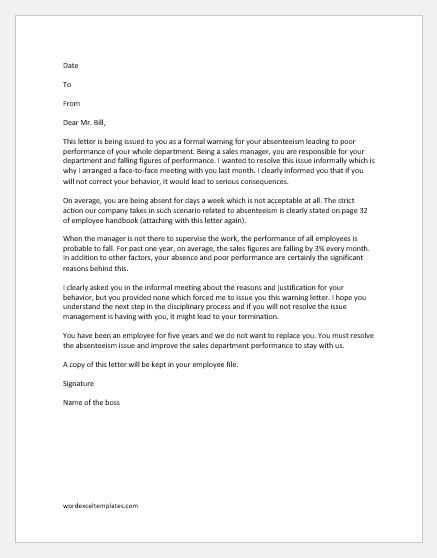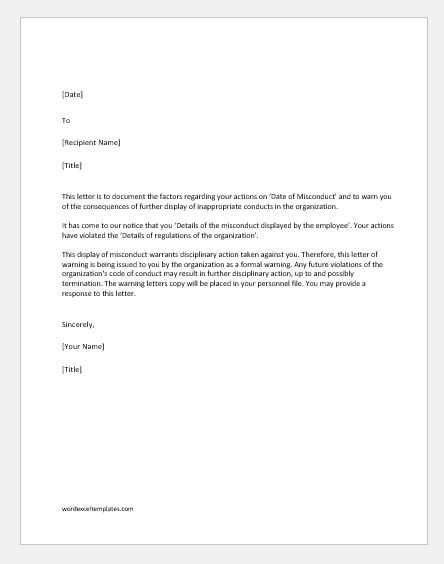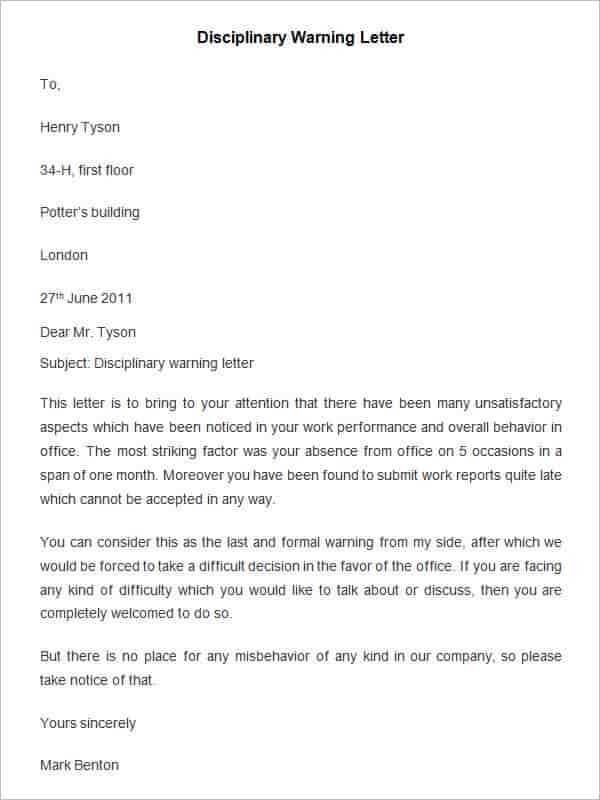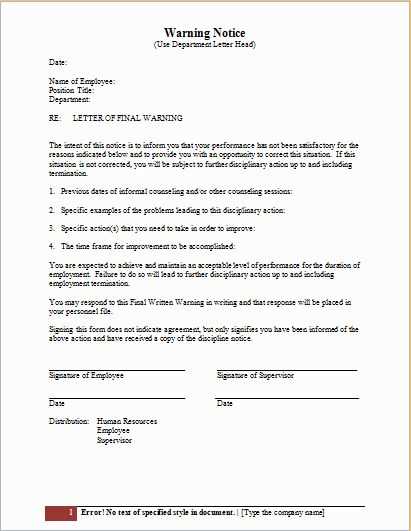Disciplinary Written Warning Letter Template Guide

Addressing performance or behavior issues in the workplace requires clear, direct communication. When corrective action is needed, an official written document can serve as a formal record of the situation. This document should outline the issue, the expected changes, and the potential consequences of not improving. Below is a guide for creating such a communication tool effectively.
Key Elements to Include
A well-crafted reprimand should cover specific components to ensure clarity and fairness:
- Employee Identification: Include the name and position of the individual involved.
- Nature of the Issue: Clearly describe the behavior or performance problem being addressed.
- Previous Discussions: Mention any prior conversations or warnings related to the issue.
- Expected Outcomes: Specify the changes expected from the employee moving forward.
- Consequences: Outline potential actions if the situation does not improve.
Clarity and Professionalism

It’s essential to maintain a professional and objective tone throughout the document. Avoid emotional language or personal judgments, as the goal is to correct the behavior and not to cause unnecessary conflict. A formal and neutral approach ensures that the employee understands the gravity of the situation while preserving a respectful tone.
Timing and Delivery
Sending this type of communication should not be rushed. It is important to choose the right moment to ensure the employee is receptive to the feedback. Ideally, this document should follow an in-person discussion or meeting, confirming what was discussed and making the situation official. This shows that the issue has been taken seriously and handled with due process.
Common Mistakes to Avoid

- Lack of Specificity: Be as detailed as possible when describing the issue. Vague statements can lead to misunderstandings.
- Inconsistent Consequences: Make sure the consequences mentioned are reasonable and in line with company policies.
- Failure to Offer Support: Whenever possible, provide resources or suggestions for improvement, showing that the company is invested in the employee’s success.
Creating an official document for addressing performance issues is a necessary part of effective management. A well-structured approach ensures that employees understand the consequences of their actions and the steps needed to correct their behavior, fostering a respectful and productive work environment.
How to Draft a Formal Reprimand Notice

Creating a formal document to address employee behavior or performance concerns is a crucial part of maintaining order and professionalism within an organization. It serves as a record, outlining the issue at hand and specifying the required corrective actions. A well-constructed notice not only clarifies the problem but also provides a clear path for improvement while ensuring that the process remains fair and transparent.
Key Components of an Effective Notice
To ensure clarity and effectiveness, the document should include several key elements:
- Employee Identification: Include full details of the individual, such as name, position, and department.
- Description of the Issue: Clearly explain the issue, specifying the actions or performance that led to the reprimand.
- Previous Discussions: Reference any previous informal or formal discussions, showing the progression of the issue.
- Required Changes: Detail the expectations for improvement and the behavior that needs to change.
- Potential Consequences: Outline the steps that will be taken if no improvement is made.
When to Issue a Formal Reprimand
Timing is critical when addressing performance or behavioral issues. A formal document should be issued only after informal attempts have failed to resolve the problem. This includes conversations, coaching sessions, or any other form of initial communication. The reprimand should be issued at a time when the employee is fully aware of their actions and can take steps toward rectification.
Handling performance issues with clear, structured communication allows both the employee and employer to have a mutual understanding of the expectations and consequences. By following these steps, employers can ensure a fair and transparent approach to managing workplace conduct.